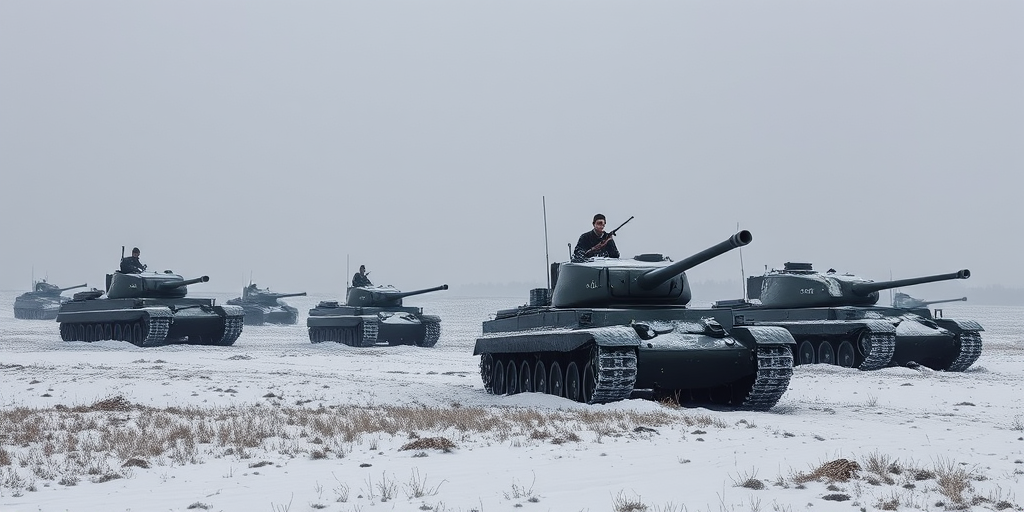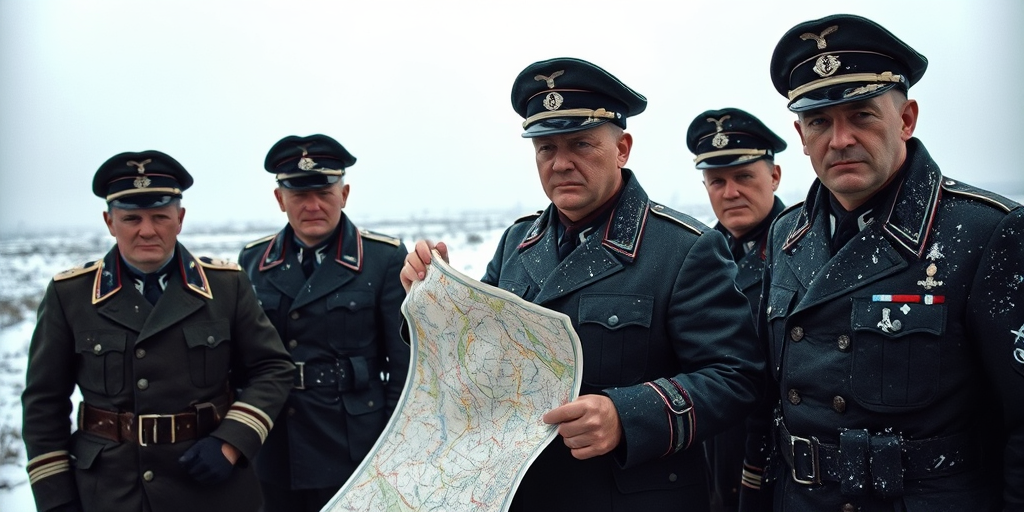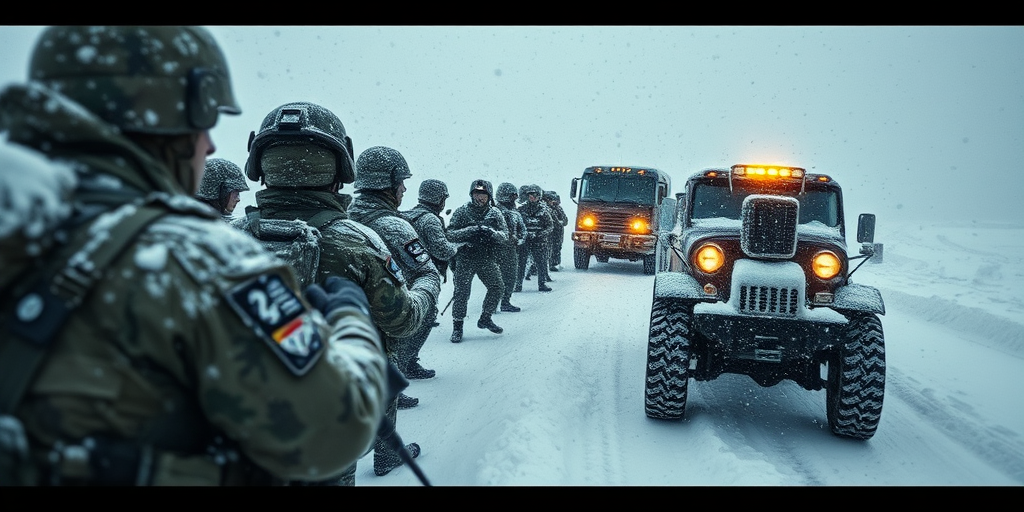Have you ever wondered how unbridled ambition can spiral into monumental disaster on the battlefield? Operation Barbarossa epitomizes this paradox, with rapid territorial gains fueling initial triumphs that soon crumbled under logistical strains and bitter strategic mistakes. This analysis dissects the campaign’s early mechanized efficiency, vast territorial coverage, and the ensuing operational failures that reshaped military strategy. By exploring these critical junctures, we reveal how a grandiose aspiration not only backfired but also ignited a renewal in military doctrine.
Ambitious Third Reich Assault: Strategic Planning and Ideological Motivations

The Third Reich embarked on an assault driven by meticulous operational planning and a potent mix of ideological convictions. Military strategists coordinated an expansive, high-tempo initiative aimed at seizing vast territories, confident that relentless force and rapid maneuvers would secure victory along the Eastern front.
Underlying these strategic maneuvers was Hitler’s unwavering belief in racial superiority and a relentless pursuit of lebensraum. The Fuhrer’s fanatic ideology aimed not only at territorial expansion but also at the subjugation of millions of Soviet citizens. Measures like the Hunger Plan, which targeted the starvation of approximately 30 million people, illustrate the brutal fusion of military ambition with inhumane intent. This dark blend of doctrine and tactical application was central to the Wehrmacht’s early momentum, setting high expectations for a sweeping victory.
However, these ideological and strategic ambitions ultimately sowed the seeds for later operational failures. The reliance on rigid, racially driven plans led to divided priorities and strategic overreach, exacerbating logistical vulnerabilities as the campaign progressed. What began as a meticulously organized offensive gradually unraveled under the weight of conflicting objectives, foreshadowing the disastrous outcomes that would reshape the course of the conflict.
Soviet Counterdefense & Red Army Mobilization in Operation Barbarossa: Ambition Meets Disaster

From the outset of Operation Barbarossa, Soviet intelligence issued repeated warnings that went unheeded by political and military leaders, leaving the Red Army critically unprepared. Early in the campaign, chaos and disorganized responses exposed significant vulnerabilities in communications and command structures, hampering an effective defense against the rapid German onslaught.
In reaction to mounting losses and unexpected offensive momentum, the Soviets swiftly overhauled their defensive posture. The high command initiated a series of reforms designed to reverse the earlier setbacks. Key counterdefensive measures implemented included:
- Rapid mobilization
- Reorganization of forces
- Defensive fallback positions
- Counteroffensive maneuvers
These steps began restoring stability along contested lines and incrementally blunted the German advances.
Through determined efforts to restructure and reinforce their military, the Soviets transformed initial disarray into a burgeoning defensive strength. This strategic recalibration not only stemmed the tide of early German successes but also set the stage for decisive counterattacks. The integration of grassroots mobilization with top-level command reforms marked a critical turning point, ultimately shifting the momentum on the Eastern Front.
Legacy and Historical Impact of Operation Barbarossa: Ambition Meets Disaster

Operation Barbarossa’s failure to capture Moscow not only precipitated catastrophic defeats at Stalingrad and Kursk but also reshaped military strategies for decades to come. This campaign exposed the inherent risks of overambition, transforming bold military advances into cautionary lessons for future conflicts.
Scholars and military strategists have long debated the legacy of this Eastern front disaster. The campaign revealed both the potential and pitfalls of rapid mechanized warfare, highlighting the critical balance between ambition and logistical sustainability. Its outcomes forced a reevaluation of military doctrine, underscoring that strategic overreach can undermine even seemingly invincible forces. Historians continue to assess the broader implications, noting that the conflict’s inherent vulnerabilities and its impact on Soviet morale played significant roles in shaping the subsequent course of World War II.
The long-term historical impact of the operation serves as a stark reminder of the dangers of unchecked strategic aspirations. Its lessons have echoed through military planning and historical debates, guiding doctrine revisions and informing contemporary assessments of military ambition and resilience.
- Influence on military doctrine
- Strategic overreach implications
- Impact on Soviet morale
- Enduring historical debate
Final Words
In the action, this analysis dissected the strategic planning, ideological motivations, and operational pitfalls that marked Operation Barbarossa: Ambition Meets Disaster.
We examined rapid territorial gains, stretched supply lines, and the relentless Soviet counterdefense that transformed early successes into a costly miscalculation.
These multifaceted insights underscore the campaign’s lasting impact on military doctrine and historical debate.
This reflection not only clarifies past dynamics but also encourages further exploration into the strategic complexities of modern warfare.
FAQ
What was the main objective of Operation Barbarossa?
A: Operation Barbarossa aimed to conquer the Soviet Union through a massive invasion launched on June 22, 1941. Hitler’s goal was to seize Soviet territory for “living space” and eliminate communist influence in Europe.
Why did Operation Barbarossa ultimately fail?
A: Operation Barbarossa failed due to severe logistical issues, harsh Russian winter conditions, overextended supply lines, and unexpected Soviet resistance. The Germans couldn’t maintain their initial rapid advance across the 1,000-mile front.
What were the key strategic mistakes during Operation Barbarossa?
A: The key strategic errors included dividing forces between multiple objectives (Moscow, Leningrad, and the Caucasus), inadequate winter preparation, and underestimating Soviet military capabilities and industrial capacity.
What role did weather play in Operation Barbarossa?
A: The Russian winter devastated German forces with temperatures below -15°F. The severe cold froze equipment, hindered vehicle operations, and caused massive casualties among troops lacking proper winter gear.
How did the Soviets counter Operation Barbarossa?
A: The Soviets employed scorched-earth tactics, relocated industrial facilities eastward, and mounted fierce resistance. Their strategy of trading space for time allowed for military reorganization and effective counterattacks.
What was the historical significance of Operation Barbarossa?
A: Operation Barbarossa marked a turning point in World War II, leading to Germany’s eventual defeat. The failed invasion depleted German military resources and shifted momentum to the Allied powers.
What were the initial successes of Operation Barbarossa?
A: Initially, German forces advanced approximately 50 miles per day, capturing vast territories from the Baltic to Black Sea. They successfully encircled numerous Soviet army units and achieved significant tactical victories.
